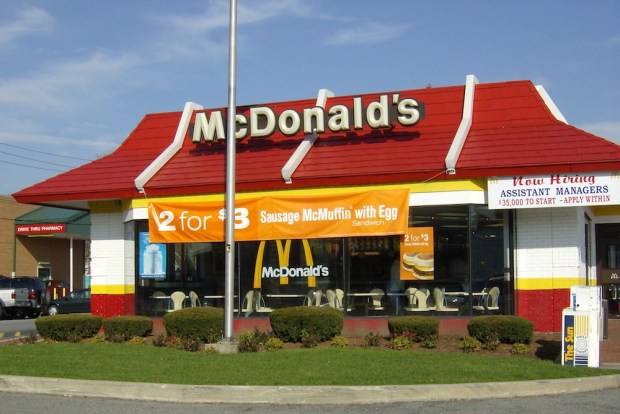Higher US Spending Marks McDonald’s Results, Hints At Resilient Consumer

Think of it as a measure of the economy, rendered in meat, bread, pickles and ketchup. Cheese too, if you like.
The latest quarterly results from McDonald’s underscore consumer spending and its resilience in the U.S. and abroad, with some relish. (We’ll stop with the food analogies and get to the numbers.)
The fast food giant beat estimates on both the top and bottom lines yesterday, with same-store restaurant sales gaining, as Reuters reported, on what has been billed as a multiyear turnaround effort.
Same-store sales were up 2.9 percent in the United States. Management noted on the conference call with analysts following the earnings report that there was a “positive comp gap” between the company and quick-service restaurant peers of as much as 270 basis points.
Consumers ponied up for more expensive burgers, which trend toward the $6 to $7 price point. At the other end of the spectrum, they also opened their proverbial purse strings for value-oriented offerings that cost $1 to $3 across the company’s value menu.
The boost in spending came even as customer visits to outlets in the United States waned. However, hungry consumers spent more, and traffic got a boost in international markets as far-flung as Japan and Canada.
Remarking specifically on the U.S., Kevin Ozan, chief financial officer at McDonald’s, told analysts that “one of the challenges in the U.S. is consistently growing comparable guest counts, especially when current overall industry traffic is negative. U.S. guest counts declined in the first quarter due to the very competitive breakfast day part and our conscious decision to simplify our value platform, eliminating most local value offers.”
“We remain focused on executing our plan to deliver guest count growth through offering the appeal to customers, as well as taking actions to grow our breakfast business,” he added.
But for the company at large, overall traffic gained 80 basis points year over year. The global sales tally got a 5.5 percent boost at locations open more than 13 months, which compared favorably to the Street at 3.9 percent.
The fast food results are a microcosm of spending on a larger scale. Also on Monday, the Commerce Department reported that consumer spending in the United States was up 40 basis points in March, among the strongest reports in months. By way of comparison, spending was relatively weaker in January and February. Consumer spending showed no gain in February and was up 20 basis points in January. That comes as personal incomes were up during both March and February by 30 basis points.
